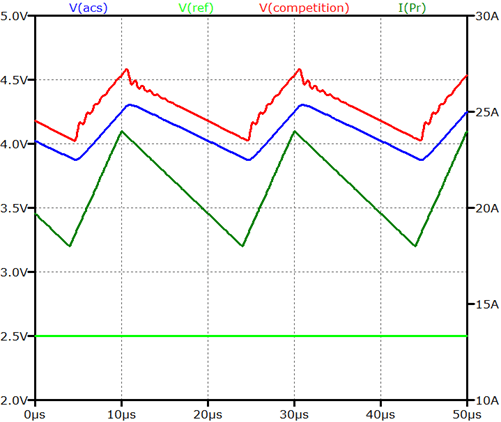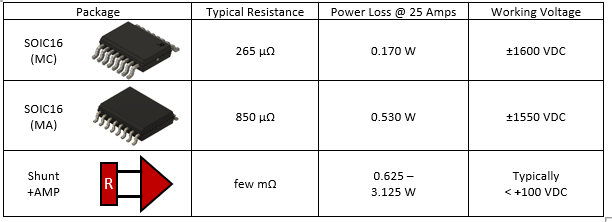New 400 kHz Current Sensors Enable More Sustainable Designs in Switch-Mode Power Designs
Really Cool. Really Efficient.
Driven primarily by cost and shrinking PCB area, system designers are opting for smaller passive components and up-integrated sensor solutions in their switched-mode power designs. The space savings of smaller capacitors and inductors comes at the expense of efficiency in the form of switching loss, as higher switching speeds are required to generate an equivalent level of power.
The availability of wide bandgap devices (SiC, GaN, and GaAs) has reduced the impact of switching losses on efficiency. As such, switching frequencies are on the rise in many power applications, including DC to DC converters, solar MPPT and inverters, telecom and server power supplies, power distribution units (PDUs), uninterruptible power supplies (UPS), and charging stations.
With these new gains in efficiency and space savings, the high-speed trend is expected to continue, creating new requirements for current monitoring and protection. Allegro’s broad family of integrated Hall-effect current sensor ICs have kept pace with this high-speed trend by offering innovative high-speed solutions without sacrificing on size, efficiency, or performance.
Stability and Accuracy
Switching frequency directly affects a power system’s response to transient loads. As power supplies are tasked with supporting multiple subsystems, a proper transient response is required to avoid brownout events as these subsystems come online. When choosing sensors for such applications, system architects typically compromise between high speed or stability and accuracy over frequency and temperature. Compare the unfiltered response of two current sensing solutions in Figure 1.

The underdamped response of competing solutions creates ambiguity during peak current detection leading to errors in control and a reduction in overall efficiency. Output ringing also triggers overcurrent events, false shutdowns, and “nuisance” faults.
With the ACS37002, system architects no longer need to compromise. Thanks to an innovative 400 kHz signal path and mature sensor architecture, the ACS37002 cleanly tracks the signal with minimal ringing, phase delay, or attenuation—and no external filter components. A differential output (Vref) and stray field rejection offer high signal integrity in noisy environments. This integrated current sensor from Allegro occupies a new sweet spot for high speed, high accuracy, and rock-solid stability over frequency and temperature.
Efficiency, Heating, and PCB Area
Frequency is not the only specification on the rise. Efficiency goals are increasing, too, driving the adoption of low loss switch technologies. As the on-resistance of switches drops, other components in the current path begin to account for a more significant percentage of power lost as heat.
Management of I2R losses has compounding effects on system cost and reliability. Limiting heat reduces cooling requirements and associated costs while extending the lifetime and reliability of power systems. For equipment like solar inverters, this translates to more time in the sun, and less time in maintenance or a landfill. Losses of standard current sensing solutions are compared in Table 1.

Power loss in shunt solutions is reduced by placing additional resistors in parallel or choosing lower resistor values. These methods are useful, but the layout is critical for overall accuracy, and the added resistors consume precious board space—especially when oversized. Lastly, most shunt solutions do not support negative input voltages, requiring additional isolation components to make the measurement.
Conclusion
The latest generation of current sensors are easy to use and are up-integrated with features that reduce design time, BOM size, and cost. As a result, system architects may focus on the unique and challenging aspects of their design.
The 400 kHz ACS37002 family of sensors is cool under heavy workloads, with a compact, low power loss package that keeps temperatures down and can extend the life of a power system. These current sensors hit the right balance of high speed, high accuracy, and stability over temperature, making switched-mode power designs greener and more efficient—leading technology and the world to a more sustainable future.
Originally published by Electronic Specifier, July 2020. Republished with permission.